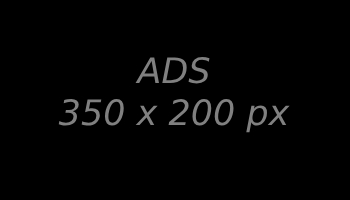President Trump Announces Reciprocal Tariffs on India and China Calls Them Discounted
In a significant trade move, US President Donald Trump has announced new reciprocal tariffs on imports from India and China. Justifying the decision, he stated that these tariffs are "discounted" compared to what these countries charge the United States. The new import duties will be 26 percent for India and 34 percent for China.
Speaking about the decision, Trump emphasized that he was being "kind" by imposing tariffs at roughly half the rates that the US faces in these countries. He pointed out that India and China have long imposed high duties on American goods, creating an unfair trade balance. According to him, this move aims to level the playing field while still maintaining diplomatic ties.
Addressing India specifically, Trump described the country's tariffs as "very, very tough." He recalled his recent meeting with Indian Prime Minister Narendra Modi, whom he called a "great friend," but made it clear that the trade relationship needed to be corrected. "Their Prime Minister just left… he is a great friend of mine, but I said to him, ‘You're a friend of mine, but you’ve not been treating us right.’ India charges us 52 percent, so we will charge them half of that – 26 percent," Trump stated.
The announcement is expected to stir reactions from both India and China, as well as from industries dependent on bilateral trade. While the US has long criticized these nations for imposing high tariffs on American goods, Trump's decision could escalate tensions in ongoing trade negotiations.
For India, this comes at a time when both countries have been working to strengthen their economic and strategic partnership. While New Delhi has repeatedly sought trade concessions from Washington, Trump's move signals a tougher stance on trade imbalances. India’s response remains to be seen, but analysts suggest that it could lead to countermeasures or further diplomatic discussions.
China, already engaged in a prolonged trade dispute with the US, may also react strongly to the new tariffs. Beijing has previously retaliated against American tariffs with its duties on US imports, leading to economic uncertainty and disruptions in global markets.
Trump’s announcement underscores his administration’s broader policy of using tariffs as leverage in trade negotiations. He has frequently criticized global trade practices that he believes put American businesses at a disadvantage. By framing the new duties as "reciprocal" and "discounted," Trump is likely aiming to present the tariffs as a fair response rather than an aggressive economic measure.
With the US election cycle intensifying, trade policies are expected to remain a key issue. Trump's tough stance on India and China aligns with his broader agenda of economic nationalism, which continues to shape US trade relations on the global stage.
Here is the full List of New Tariff Rates Trump Displayed
- China 34%
- European Union 20%
- Vietnam 46%
- Taiwan 32%
- Japan 24%
- India 26%
- South Korea 25%
- Thailand 36%
- Switzerland 31%
- Indonesia 32%
- Malaysia 24%
- Cambodia 49%
- United Kingdom 10%
- South Africa 30%
- Brazil 10%
- Bangladesh 37%
- Singapore 10%
- Israel 17%
- Philippines 17%
- Chile 10%
- Australia 10%
- Pakistan 29%
- Turkey 10%
- Sri Lanka 44%
- Colombia 10%
- Peru 10%
- Nicaragua 18%
- Norway 15%
- Costa Rica 10%
- Jordan 20%
- Dominican Republic 10%
- United Arab Emirates 10%
- New Zealand 10%
- Argentina 10%
- Guatemala 10%
- Madagascar 47%
- Myanmar (Burma) 44%
- Tunisia 28%
- Kazakhstan 27%
- Serbia 37%
- Egypt 10%
- Saudi Arabia 10%
- El Salvador 10%
- Cote D Ivoire 21%
- Laos 48%
- Botswana 37%
- Trinidad and Tobago 10%
- Morocco 10%
- Algeria 30%
- Oman 10%
- Uruguay 10%
- Bahamas 10%
- Lesotho 50%
- Ukraine 10%
- Bahrain 10%
- Qatar 10%
- Mauritius 40%
- Fiji 32%
- Iceland 10%
- Kenya 10%
- Liechtenstein 37%
- Guyana 38%
- Haiti 10%
- Bosnia and Herzegovina 35%
- Nigeria 14%
- Namibia 21%
- Brunei 24%
- Bolivia 10%
- Panama 10%
- Venezuela 15%
- North Macedonia 33%
- Ethiopia 10%
- Ghana 10%
- Moldova 31%
- Angola 32%
- Democratic Republic of the Congo 11%
- Jamaica 10%
- Mozambique 16%
- Paraguay 10%
- Zambia 17%
- Lebanon 10%
- Tanzania 10%
- Iraq 39%
- Georgia 10%
- Senegal 10%
- Azerbaijan 10%
- Cameroon 11%
- Uganda 10%
- Albania 10%
- Armenia 10%
- Neall 10%
- Sint Maarten 10%
- Falkland Islands 41%
- Gabon 10%
- Kuwait 10%
- Togo 10%
- Suriname 10%
- Belize 10%
- Papua New Guinea 10%
- Malawi 17%
- Liberia 10%
- British Virgin Islands 10%
- Afghanistan 10%
- Zimbabwe 18%
- Benin 10%
- Barbados 10%
- Monaco 10%
- Syria 41%
- Uzbekistan 10%
- Republic of the Congo 10%
- Djibouti 10%
- French Polynesia 10%
- Cayman Islands 10%
- Kosovo 10%
- Curacao 10%
- Vanuatu 22%
- Rwanda 10%
- Sierra Leone 10%
- Mongolia 10%
- San Marino 10%
- Antigua and Barbuda 10%
- Bermuda 10%
- Eswatini (Swaziland) 10%
- Marshall Islands 10%
- Saint Pierre and Miquelon 50%
- Saint Kitts and Nevis 10%
- Turkmenistan 10%
- Grenada 10%
- Sudan 10%
- Turks and Caicos Islands 10%
- Aruba 10%
- Montenegro 10%
- Saint Helena 10%
- Kyrgyzstan 10%
- Yemen 10%
- Saint Vincent and the Grenadines 10%
- Niter 10%
- Saint Lucia 10%
- Nauru 30%
- Equatorial Guinea 13%
- Iran 10%
- Libya 31%
- Samoa 10%
- Guinea 10%
- Timor-Leste 10%
- Montserrat 10%
- Chad 13%
- Mali 10%
- Maldives 10%
- Tajikistan 10%
- Cabo Verde 10%
- Burundi 10%
- Guadeloupe 10%
- Bhutan 10%
- Martinique Tonga 10%
- Mauritania 10%
- Dominica 10%
- Micronesia 10%
- Gambia 10%
- French Guiana 10%
- Christmas Island 10%
- Andorra 10%
- Central African Republic 10%
- Solomon Islands 10%
- Mayotte 10%
- Anguilla 10%
- Cocos (Keeling) Islands 10%
- Eritrea 10%
- Cook Islands 10%
- South Sudan 10%
- Comoros 10%
- Kiribati 10%
- Sao Tome and Principe 10%
- Norfolk Island 29%
- Gibraltar 10%
- Tuvalu 10%
- British Indian Ocean Territory 10%
- Tokelau 10%
- Guinea-Bissau 10%
- Svalbard and Jan Mayen 10%
- Heard and McDonald Islands 10%
- Reunion 37%







